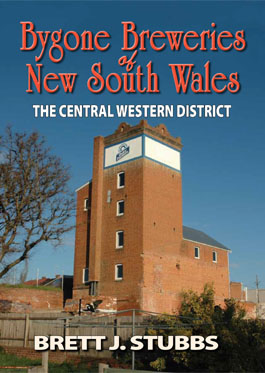
Book review: Bygone Breweries of NSW – the Central Western District
Bygone Breweries of NSW – The Central Western District

Bygone Breweries of NSW – The Central Western District
The latest instalment in Dr Brett J. Stubbs’ historical canon focuses on the early days of brewing in Lithgow, Bathurst, Orange and surrounds.
Bygone Breweries of NSW – The Central Western District is the second in Stubbs’ series of accounts of brewing in regional NSW, following his release of the Hunter River volume in 2016.
“The westward spread of settlement across the Blue Mountains led to brewing being commenced near the town of Bathurst about 1830 – a similar time to its inauguration in the Hunter – although it began to flourish somewhat later in the Central West – in the 1840s,” writes Stubbs.
The books are the product of painstaking research by Stubbs, well known to Brews News readers for his historical reports and research tallying brewery openings across Australia.
Uproarious and troublesome
The arrival of breweries in Bathurst was not universally welcomed by locals, he writes in The Central Western District.
The book recounts an 1852 letter to the editor of the Bathurst Free Press, where the author bemoans that his servants had so enthusiastically embraced the new breweries they had become “uproarious and very troublesome… the affairs of my establishment are often at a standstill for many days together”.
“The newspaper could suggest no remedy for the evil complained of, except ‘an advocacy of teetotal principles to his men, which would probably be about as efficacious as whistling jigs to a tombstone’,” writes Stubbs.
The cities of Bathurst, Orange and Lithgow were the most important in the Central Western district from a brewing history perspective, the book says, though brewing took place in around 20 other localities.
“Many of these could be described as flashes in the pan, places where brewing was undertaken to satisfy a suddenly-arising but short-lived demand for beer,” he says.
Stubbs says a mining rush was most often the cause for this spike in demand, “and a sudden departure of the thirsty miners was soon followed by the departure of the brewers”.
Similar competitive pressures to those faced by small brewers today are repeatedly nominated as the cause of consolidation that saw brewing disappear from the Central West almost entirely by the 1930s, and entirely 20 years later.
One Thomas Comerford, who in 1901 resurrected the Phoenix Brewery, Cowra, closed it less than a year later complaining that it was difficult to compete with the price of Sydney beer.
“There were only three hotels in the district who could purchase the the beer manufactured locally, as all the other hotels were ‘tied’ houses owned by the big breweries the city,” the book recounts.
A valuable resource for brewing history buffs, Bygone Breweries of NSW – The Central Western District is available to purchase here.



